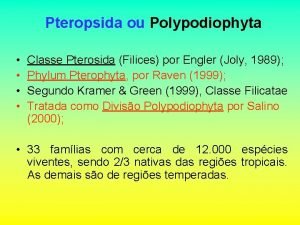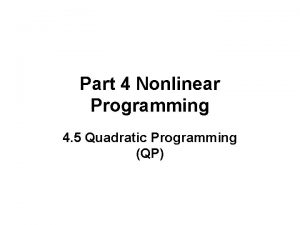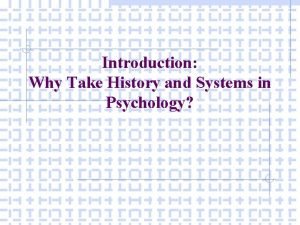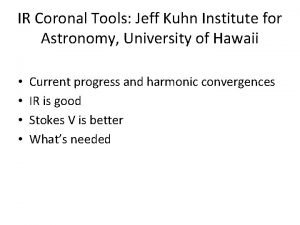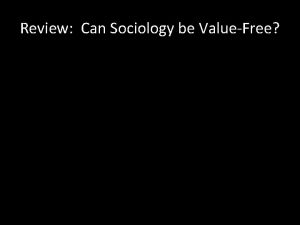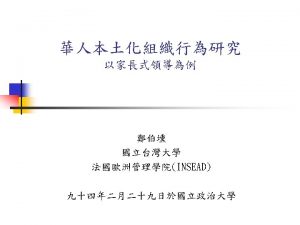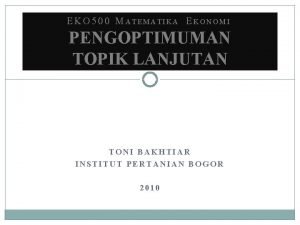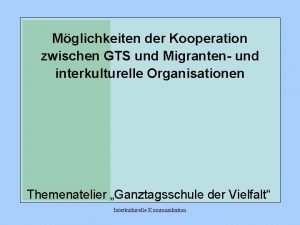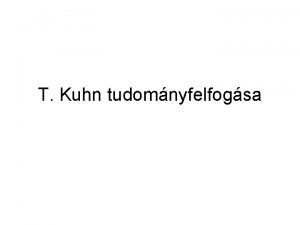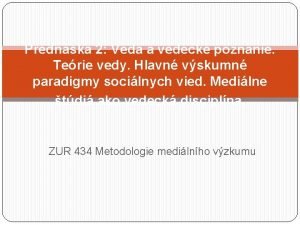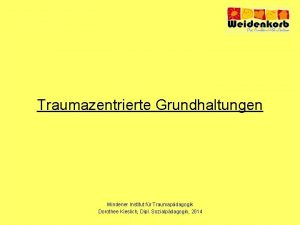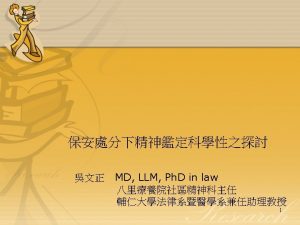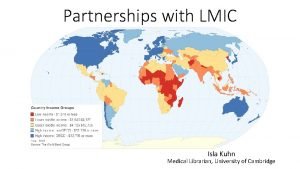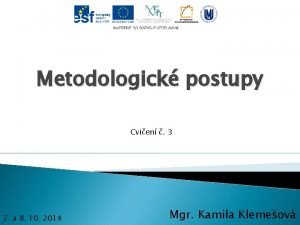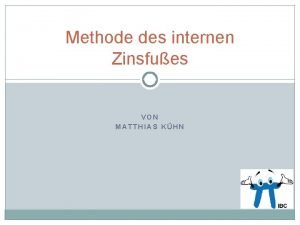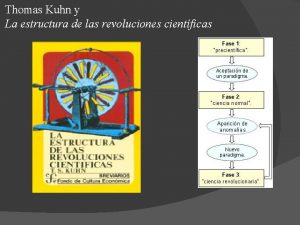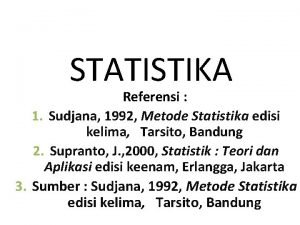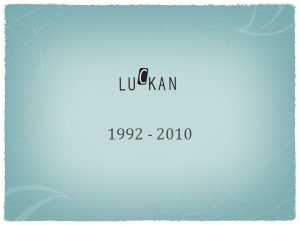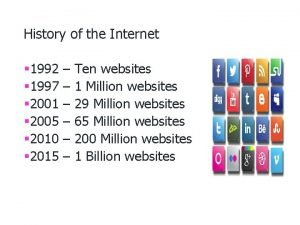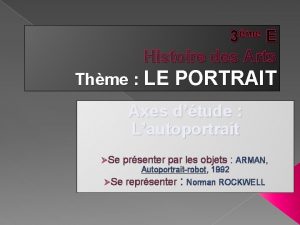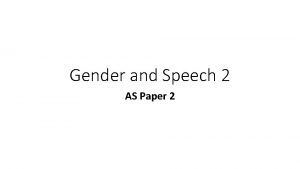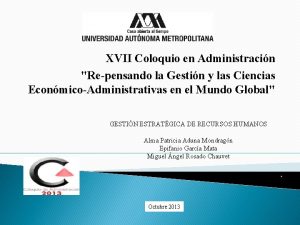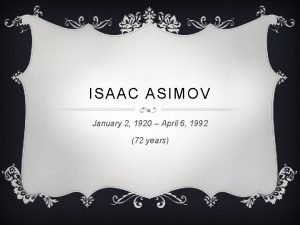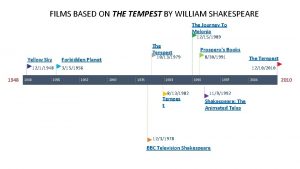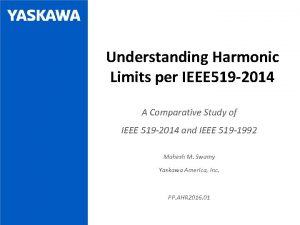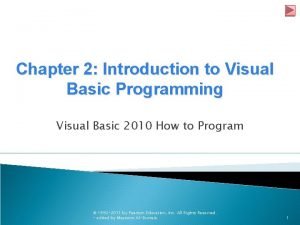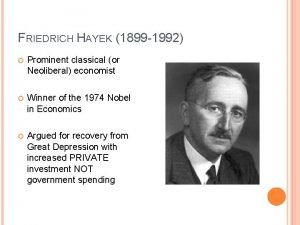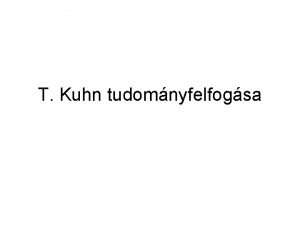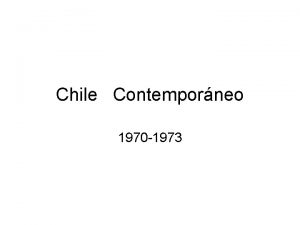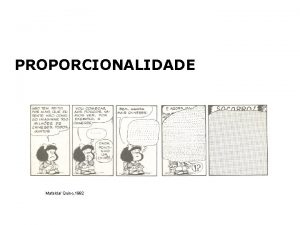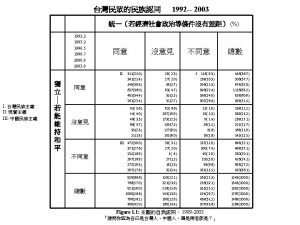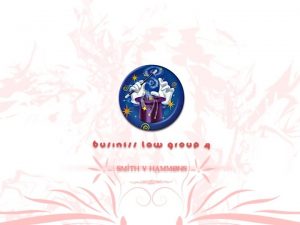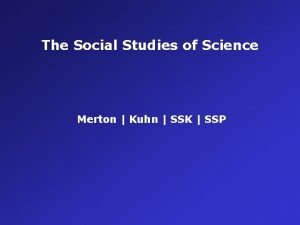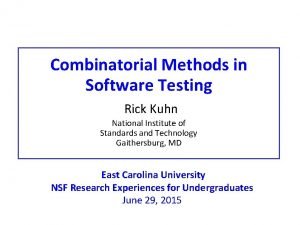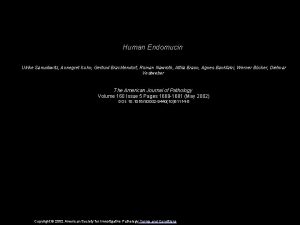n Kuhn 1970 n n Thagard 1992 n


















































- Slides: 50



組織行為研究的理路:構念演化 n Kuhn (1970) n n Thagard (1992) n n 科學典範(scientific paradigm) 常態科學(normal science) 典範轉移(paradigm shift) 構念演化(concept revolution) Reichers & Schneiders (1990) n 構念演化的三階段 n n n 引進與闡述(introduction & elaboration) 評估與論辯(evaluation & argumentation) 強化與接納(consolidation & accommodation)






組織行為研究的理路:科學研究歷程 理論 n What:關鍵要素是什麼? n n How:因素關係為何? n n n 因果關係(causal effect) Internal Validity Why:為什麼選擇這些因素? n n 周延(comprehensiveness) 簡約(parsimony) Construct Validity 合理(sense making) 紮實(soundness) Rationale/ Basic Assumption Who, Where, When:應用範圍與界線何在? n n 類推性 External Validity





華人組織行為研究:文化的影響 Hofstede (1980): Culture’s Consequences (40 Nations)









家長式領導:迷思或事實 n 過去研究反省 n 國外模式驗證 n n n 國外模式修正 n n n Effective Leadership (Feishman, 1954; Cheng & Yang, 1977) Contingency Model (Fiedler, 1967; Cheng, Chuang & Jen, 1986) Transactional Leadership (Sims, 1977; Cheng, 1988) Substitute for Leadership (Kerr & Jermier, 1978; Cheng, 1985; Farh, Podsakoff & Cheng, 1987) Situational Model (Hersey & Blanchard, 1977; Cheng & Jen, 1987) Effective Leadership (Cheng & Chuang, 1981) --Moral leadership Charismatic Leadership (Huang, Cheng, & Chou, 2004) --Value fit perspective Believing is Seeing or Seeing is Believing?


家長式領導:本土化研究策略 n 研究作法 n Step 1 Step 2 Step 3 Step 4 Step 5 Step 6 n 構念的引進與闡述 ‧ Article Review (1988 -1992) ‧ One Case Observation (1993 -1995) ‧ Multiple Cases Study (1995 -1996) ‧ Pilot Quantitative Study (1996 -1997) ‧ Cultural Analysis and Model Building (1998 -1999) ‧ Instrument Development (2000) 構念的評估與論辯 Step 7 ‧ Model Testing and Internal Validation (2001~ ) Step 8 ‧ Cross-Cultural Comparison and Generalization (2002~ ) Step 9 ‧ Instrument and Model Calibration (2003~) Step 10 ‧ Model Application (2005~)

家長式領導:構念的引進 Step 1、Paternalistic Leadership: Article Review § § § Cross - Cultural Psychology Comparative Management Sociology and Anthropology China Studies Paper : 研討會(1988)、中國人、中國心(1991)


家長式領導:構念的引進 Step 2、Paternalistic Leadership: Observing a Paternalistic CEO § Method : Clinician approach and grounded theory § Subject : 1 CEO and 8 staffs of a Taiwanese company § Main Findings : § Paternalistic leadership includes two factors as authoritarianism and benevolence. § Build a two-factor model § The moderating effects of subordinate dependence § Paper : 中央研究院民族學研究所集刊(1995)

家長式領導:構念的引進 Step 3、Paternalistic Leadership: Multiple Cases Study § Method : 44 higher managers, in-depth interview and multiple cases analysis § Main Findings : § Provide more solid evidence to paternalistic leadership § Describe paternalistic leader behavior and subordinate responses in detail § Link paternalistic leadership to Yang’s authority-orientation § Paper: NSC Technical Report (1995)

家長式領導:構念的引進 Step 4、Paternalistic Leadership: Pilot Quantitative Studies n n Method: Questionnaire survey, 157 manager-staff dyads and 180 principle-teacher dyads Main Findings n n n Develop instrument and check its psychometric indicators Authoritarianism and Benevolence Test two-factor model Understand concurrent validity Have interaction effect on subordinate effectiveness Paper: NSC Technical Report (1996, 1998)



家長式領導:構念的闡述 Step 5、Cultural Analysis and Model Building n n Method : Article Review Main Findings: n n Link paternalistic leadership to Chinese traditional cultural value Build a triad model of paternalistic leadership Identify contextual factors Paper : Book chapter (Farh & Cheng, 2000 a) Target article (Farh & Cheng, 2000 b)






家長式領導:構念的評估與論辯 Step 7 : Model Testing and Internal Validation n n Cheng, B. S. , Huang, M. P. , & Chou, L. F. (2002). Paternalistic leadership and its effectiveness: Evidence from Chinese organizational teams. Journal of Psychology in Chinese Societies(Hong Kong), 3(1), 85 -112 鄭伯壎、謝佩鴛、周麗芳(2002)。校長領導作風、上下關係品質及教 師角色外行為:轉型式與家長式領導的效果。本土心理學研究期刊,17 期,105 -161頁。 吳宗祐、徐瑋伶、鄭伯壎(2002)。怒不可遏或忍氣吞聲?華人企業中主 管威權領導行為與部屬憤怒情緒反應的關係。本土心理學研究期刊,18 期,13 -50。 鄭伯壎、周麗芳、黃敏萍、樊景立、 彭泗清(2003)。家長式領導的三 元模式:中國大陸企業組織的證據。本土心理學研究期刊, 20期,209250。 Cheng, B. S. , Chou, L. F. , Huang, M. P. , Wu, T. Y. , & Farh, J. L. (2004). Paternalistic leadership and subordinate reverence: Evidence from business organizations in Taiwan. Asian Journal of Social Psychology , 7(1), 89 -117.










Conclusion: What’s the next step? n n Paternalistic leadership is the fact in Chinese organization. Paternalistic leadership is popular in other Asia countries, such as Japan, Korea and India; Middle-East and Latin American (Aycan & Kanungo, 2001) Conduct step 8 (cross-cultural comparison and generalization), step 9 (instrument and model calibration), and step 10 (model application) Enter into the third stage of concept revolution: consolidation and accommodation

A long way to go, But quite interesting! Welcome to join us. Q&A
 Thomas kuhn elizabeth kuhn
Thomas kuhn elizabeth kuhn Haley kuhn
Haley kuhn Sinângio
Sinângio Kuhn tucker
Kuhn tucker Popper vs kuhn
Popper vs kuhn Nirsp login
Nirsp login Peter kuhn model
Peter kuhn model What is positivism in sociology
What is positivism in sociology Kuhn social science
Kuhn social science Kondisi kuhn tucker
Kondisi kuhn tucker Latifa kühn
Latifa kühn Popper vs kuhn
Popper vs kuhn Rejtvény
Rejtvény Victor spinski
Victor spinski Interpretativizmus
Interpretativizmus Kuhn perry
Kuhn perry Kuhn poker
Kuhn poker Stufen der partizipation nach kühn
Stufen der partizipation nach kühn Paradigm shift kuhn
Paradigm shift kuhn Thomas kuhn a tudományos forradalmak szerkezete pdf
Thomas kuhn a tudományos forradalmak szerkezete pdf Isla kuhn
Isla kuhn Postrukturalismus
Postrukturalismus Interner zinssatz formel
Interner zinssatz formel Chandlee kuhn
Chandlee kuhn Que es la revolucion cientifica segun kuhn
Que es la revolucion cientifica segun kuhn 1992 electoral map
1992 electoral map Functions of rci
Functions of rci Ron clarke 1992
Ron clarke 1992 Npe 1992 recommendations
Npe 1992 recommendations Comrey & lee 1992
Comrey & lee 1992 Plan of action 1992
Plan of action 1992 Moreland and beach 1992
Moreland and beach 1992 Metode statistika sudjana
Metode statistika sudjana 2010-1992
2010-1992 Internet 1992
Internet 1992 Denis johnson, “emergency” (1992)
Denis johnson, “emergency” (1992) Autoportrait robot arman
Autoportrait robot arman Linux 1992
Linux 1992 Jane pilkington gender theory
Jane pilkington gender theory Modelo de besseyre des horts
Modelo de besseyre des horts April 6 1992
April 6 1992 Food pyramid food groups
Food pyramid food groups The tempest animated tales
The tempest animated tales Life skills oms 1992
Life skills oms 1992 Interpretasi effect size
Interpretasi effect size Point of common coupling (pcc)
Point of common coupling (pcc) Visual basic 1 of 1992.
Visual basic 1 of 1992. Earth summit 1992
Earth summit 1992 Rd 1435/1992
Rd 1435/1992 Friedrich hayek (1899-1992)
Friedrich hayek (1899-1992) Gizem memiç türkiye güzeli
Gizem memiç türkiye güzeli


